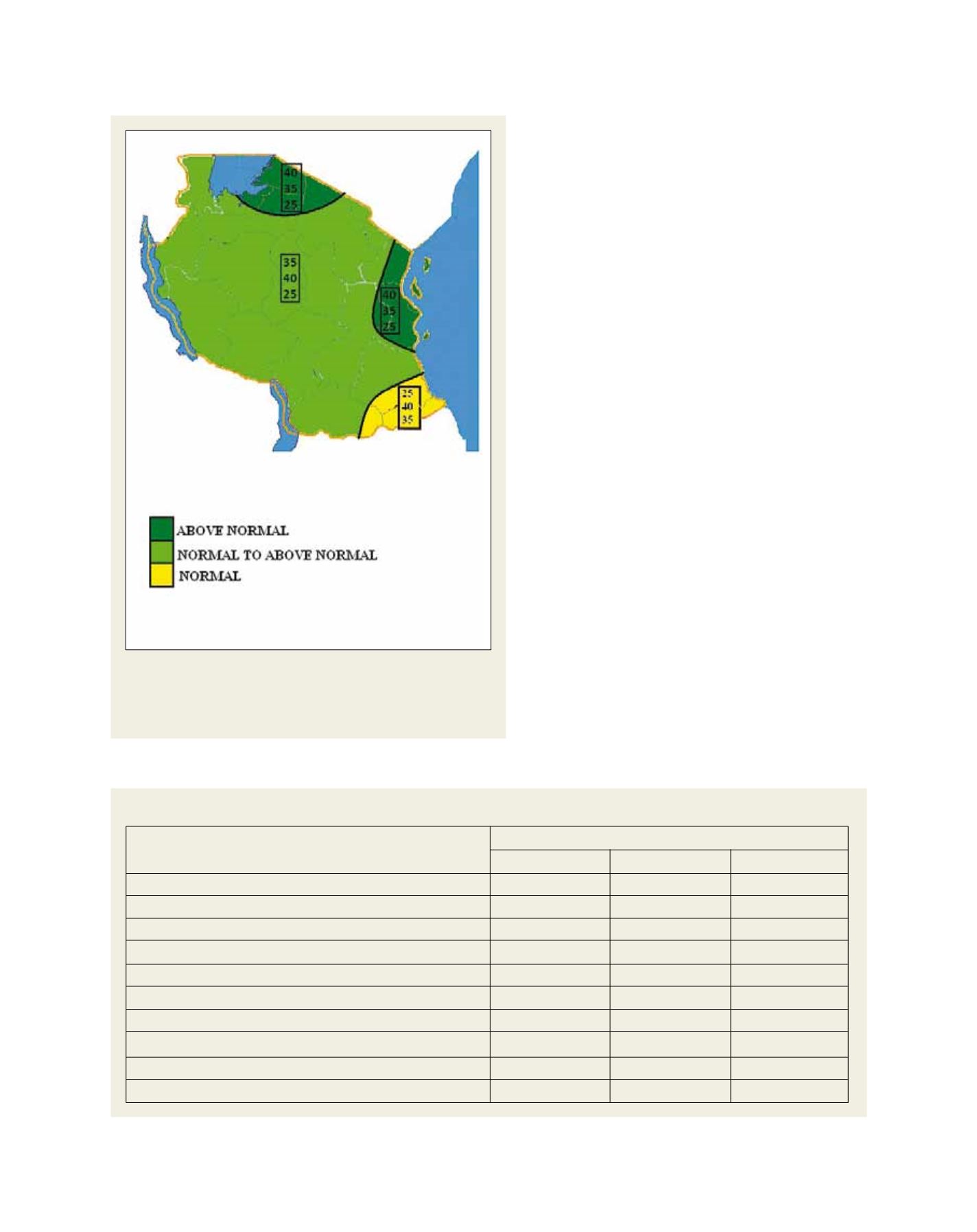

[
] 131
D
isaster
R
isk
R
eduction
due to increased climate variability and change, the
demand for timely, high quality weather and climate
information has increased.
TMA faces several challenges in its efforts to enhance
quality and efficiency in the provision of services to the
various socio-economic sectors, aggravated by increas-
ing running costs, low community awareness and
budgetary pressures.
Due to complex topographical features, Tanzania has
unique and diverse climatic characteristics, ranging
from tropical to arid and semi-arid lowlands. However,
the current observational station network is not suffi-
cient to capture all climatic regimes and the local
climate. Currently there are no marine weather stations
despite the fact that the country is surrounded by large
water bodies, including Lake Victoria, Lake Tanganyika,
Lake Nyasa and the Indian Ocean.
Some historical climate data are still in paper forms that
are deteriorating with time and thus need to be rescued
and digitized, and the meteorological database manage-
ment system is outdated and needs to be replaced.
Maintaining the right expertise across all parts of the organ-
ization is an ongoing challenge due to ageing workforce and
growing demand for services. TMA also faces challenges in
training, recruiting and retaining qualified staff.
Goals for development
Tanzania faces many natural hazards and needs to
develop an effective multi-hazard early warning system
for disaster risk reduction. The Global Framework for
Climate Services (GFCS) will increase the accuracy of
climate prediction through coordination of the global,
regional and national weather and climate prediction
centres. Disseminating knowledge of natural disasters
to the media and community will enhance awareness of
the risks and impacts of natural disasters and measures
to be taken for mitigation towards reducing risks.
Source: TMA three-year strategic plan (2010)
The current status and needs of Tanzania’s meteorological infrastructure
A climate forecast issued by TMA for December 2011: above-
normal rainfall was predicted for the entire north coast of
Tanzania and other areas in the October-December 2011
rainfall season; the government and community were informed
of possible flooding and advised to take precautions
Description
Number of stations
Current
28
14
13
150
2056
0
1
1
1
0
Conventional surface synoptic stations
AWS surface synoptic stations
Agrometeorological stations
Climatological stations
Rainfall stations
Marine weather station
Upper-air stattions
Pilot balloon
Weather radar
Lightning detector
28
5
13
60
600
0
1
-
0
0
32
113
20
250
2500
12
4
5
7
10
Operational
Needed
Source: TMA
















